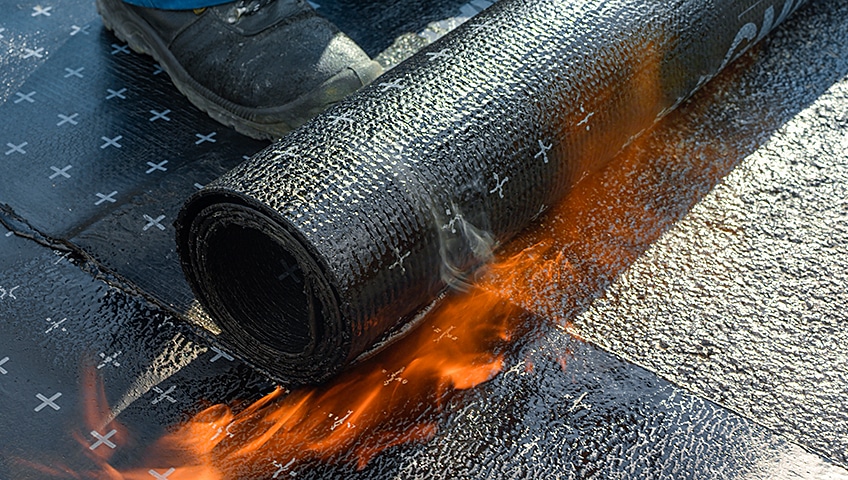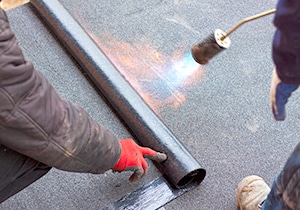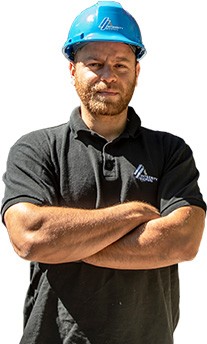
The Advantages of Built-Up Roofing Systems
February 7, 2021
Everything old is new again in the roofing industry. Built-up roofing (BUR) systems, see their roots in the 1800s, are among the most practical roofing systems for flat and low-sloped roofs for commercial or industrial use. In light of technological advancements the roofing industry has made, they dovetail with built-up roofing systems well. This blog post will explain how a BUR is constructed and the benefits for anyone who has a built-roofing system installed by flat roofing contractors.
How A Built-Up Roofing System is Made
Like the name intones, a built-up roofing system is a multi-layered roofing system constructed with protection in mind. The system’s elements are connected through a lamination process that joins the four sections to provide a h3 and robust roofing system.
- A base sheet is laid to begin the process
- A felt or fabric sheet is added to cover any areas that didn’t receive coverage
- Bitumen is added to reinforce the protective layer for your roof
- Finally, the surfacing component is added to seal the layers together to create a watertight seal for your roofing system
Roofing Systems That Use the BUR Method
Three systems are in use for the BUR, and you can’t go wrong installing any one of these superior roofing systems.
Ballasted, Built-Up Asphalt Roofing System
This system uses gravel to cover the roof’s exterior, and it isn’t anchored to the roof or the membrane in any way. Durability was a question mark when the system first debuted in the marketplace. But the size of the stones laid on deck was heavier than initially thought, and they were securely anchored to prevent ‘bald’ spots on the roof exposing the roofing’s underbelly. Plates and fasteners are added to keep the roof firmly affixed in central locations to keep a tight seal topside. The system’s simplicity is in the installation; a blast of gravel across the roof’s spectrum is all it takes, and this system has the luxury of being installed under any conditions.
Built-Up, Hot Roofing Systems
As the name suggests, heat is used to liquefy components to be installed. Hot materials are sometimes difficult to work as temperatures can hurt the installation process.
Built-Up, Cold Roofing Systems
Installation is where this system shines. The roofing materials can be applied with a squeegee, and no toxic vapours are released when this roofing system is installed.
The Advantages Built-Up Roofing Systems Provide
Durable
For a roofing system to earn its prestige, it must withstand the weather. A BUR will withstand hailstorms and windstorms and come out the other side unscathed. Another benefit that a BUR provides is that it will resist punctures. Accidentally dropping tools or walking on the roof is no problem; the system will not sustain damage due to the installation’s layering.
Maintenance Is A Breeze
When you have a BUR system, you should know that it is installed in large sections, and the profile of the roof is low to the top of the building. Fewer materials and less susceptible to the weather’s vagaries is another area where the BUR is value for money.
Virtually Leakproof
Compared to single-ply roofing systems, the BUR grades out as superior in the area where it is needed most, water leakage. The asphalt and fabric are layered to form the BUR to create a watertight seal unrivalled in the roofing business. Asphalt is considered the glue that holds a roofing system together and is impervious to water, providing five times better protection than other roofing systems.
Flame Retardant
The three types of BUR offer excellent fire-retardant surfaces that prevent a fire from starting and spreading on the roofing system. Ballasted roofing systems look great while providing optimal protection, while the cold BUR is a ‘green’ solution that emits no toxic discharge when installed.
Reduce Energy Consumption
In the past, a layer of gravel was all that stood in the way of the sun’s UV rays and your roofing system. A reflective coating that is white bounces the UV rays off the roof, reducing heat absorption through the roof and into the building. Your cooling costs will fall drastically, and the roofing system’s financial outlays will more than pay for itself over time.
Long Lifespan
As for longevity, these roofing systems last for at least 15-years and can be functional for up to 30-years with proper installation, care, and maintenance.
How Do We Install Built-Up Roofing Systems?
A BUR works on a ply system, where layered materials are sequenced with gravel, bitumen, or modified bitumen and fabric to create a reinforced seal. Depending on climate and weather, your needs might revolve around a three-ply or a four-ply roofing system that uses a material known as felts to seal the components together that attach to the roof membrane. To begin the installation process, a base sheet is mechanically affixed to the decking to establish a secure connection with the building.
Integrity Roofers, Your Specialists

For a no-obligation consultation and a professional estimate for a BUR solution, contact our office today at Integrity Roofers at 647.953.9365.



















